BIRD CARD: THE RUBY-THROATED HUMMINGBIRD
BETTER KNOW A RUBY-THROATED HUMMINGBIRD. FUN (AND) FACTS!

As I was staring out the window, gazing at Fred, my “regular” male Ruby-Throated Hummingbird, I was mesmerised by how mysterious this little one is.
We all love a little mystery… but in birds? He pecked away on my hummingbird feeder, showing off his characteristic iridescent emerald-green body and blackish-red throat.
But once in a while, when seen at the right angle, he would suddenly reveal the full-on blazing red of his throat in all its glory, like a magician. And as I ohhh and ahhh’d, I decided that this little flyer is our bird of the week. So, Ruby-Throated Hummingbird, let's solve your mystery!
COMMON NAME: Ruby-Throated Hummingbird
SCIENTIFIC NAME: Archilochus colubris
AVERAGE LIFE SPAN: 5 to 9 years (in the wild)
In case you missed last week’s BIRD-OF-THE-WEEK: The Northern Cardinal
Though small, this is one feisty bird.

Hundreds of types of hummingbirds spread their wings in the tropics of America, some fly west - but east of the Mississippi, you will mostly spot one type only: the Ruby-Throated Hummingbird.
Famous for the bright red patches on the adult’s throat, the Ruby-Throated Hummingbird is one of the tiniest birds in the world, with a long, thin beak almost an inch long which slopes slightly downwards. Its tongue darts in and out of its beak 13 times per second!
The Ruby-throated Hummingbird at 2.7-3.5 inches long, weighs an eighth of an ounce, the weight of a nickel! They can’t walk or hop, only move around on a branch in a sort of fox trot.
These little hummers have one of the fastest metabolic rates in all the animal kingdom, with a heart rate of 1260 bpm (beats per minute) and 250 breaths per minute - and that’s when resting!
Just for comparison - humans have a 60-100 bpm.
Fast and furious.
Don’t be fooled by their size! Though as big as a tea cup, Ruby-Throated Hummingbirds are very territorial. Despite being prey to many predators such as passerine birds, jays, hawks, house cats and crows - none are as fast as these Ruby-Throated zippers. They can fly 30 mph and dive at 60 mph!
A Ruby-Throated Hummingbird can flap its wings 50 times per second, sometimes even 80! It is one of the only species to have its wings attached to the shoulder joints, which allows the wing to rotate 180 degrees, making these hummers the only bird who can fly forward, backward and hover in the air.
This evolutionary tactic helps them escape their predators as they change direction fast and suddenly, then shoot away like a flying arrow. Something even Zorro can learn from.
However if the hummingbird is sleeping or distracted by mating action, it could be very well be attacked.
Males and females are hostile to fellow hummingbirds. The female will even fight her own offspring on the feeding ground, once the little one reaches a certain age. The female is hardly ever captured by its prey. Now there’s a lady who’s hard to get.
Most Ruby-Throated Hummingbirds live up to 9 years. Males rarely pass the age of 5, due to loss of weight during the breeding season or a difficult migration.
What is the best bird feeder for Ruby-throated Hummingbirds?
Ruby-Throated Hummingbirds love the open woods and love gardens with bird feeders even more!
They can get used to you and your feeders quite easily. These inquisitive flyers love the colour red and will investigate anything in that shade, most likely as a source of food. This is why most hummingbird feeders are splashed with red.
If you have a reddish article of clothing in the garden, be sure this little Sherlock will investigate it too!
What do Ruby-Throated Hummingbirds eat?
Ruby-Throated Hummingbirds peck on nectar, sap, seeds, small insects and tube-shaped flowers such as the trumpet vine and others which flower in red, orange or pink. This is the reason why hummingbirds are great pollinators and will do wonders for your garden.
At an average of 50 wing-flaps per second, this little athlete must eat twice its body weight to sustain not only the energy needed to flap that many times and keep up with its fast movements, but also stock up for migration in the fall.
Make sure you don’t offer nectar with red colouring which can do them harm. Rather give them the right nectar in a red bird feeder or plant red, orange or pink flowers for them to feast on.
Not exactly the love-bird.
Ruby-Throated Hummingbirds don’t “waste” time on courtship. I guess life is too short!
In the spring, the males return to the breeding area before the females to claim breeding territory. When a female flies in, watch out! The male puffs his red-throat feathers and begins to be, shall we say, a little over-enthusiastic around the female.
The males choreograph a “dive show” by plunging over and under her head at a range of 2 meters, flapping his wings up to 200 times a minute! Like an excited heart beat!
If he’s lucky, the female will perch on a branch, as if to say “I’m listening…” The male will speedily fly back and forth in front of her, happy that his love is requited.
The female may exude a high-pitched chirp, droop her wings and cock her feathers to assume position. Once the female has mated, the male flies off to his next conquest, leaving the female to raise the young’uns alone.
No candle-light dinner here.
The nesting process.
The female is left to build the nest on her own. The size of a quarter, she attaches it to a branch with spider silk and camouflages it with dry leaves and lichen. Inside, the nest is a comfy combination of dandelion or thistle-down.
The female usually lays two or sometimes three eggs the size of peas. The eggs crack open into a new world after an incubation of two to four weeks.
The female then feeds her newborns for two or three weeks between 1 and 3 times an hour! She feeds them by regurgitation of insects, as nectar doesn’t have sufficient nutrients for the little young'uns. These chicks usually leave the nest when they are only 22 days old. The nest is sometimes used yet again the following year. Nobody gives up good real-estate so fast!
Where do they go in winter?
Around fall, the migratory hummingbirds fly off on a non-stop "flyathon” to Mexico and Central America. We’re talking about 900 miles here.
Just beforehand, they almost double their weight to ”fuel up” for the long flight. The hummers journey quite close to the tops of trees and over bodies of water to refuel mid-air.
What do hummingbirds sound like?
As their name implies, humming birds make a buzzing sound due to the flapping of their wings. But their rapid squeaky chirps are usually to fend off any trespassers on their feeding grounds.
FUN FACTS
- Hummingbirds have no sense of smell, which is why the Ruby-Throated Hummingbird prefers orange or red flowers. It leads them to the nectar.
- Ruby-throated Hummingbirds have such good colour distinction that they can see the ultraviolet spectrum - which humans cannot.
- During flight, hummingbird oxygen consumption per gram of muscle tissue is around 10 times higher than of human elite athletes.

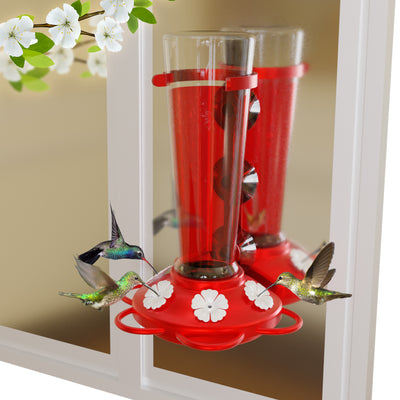
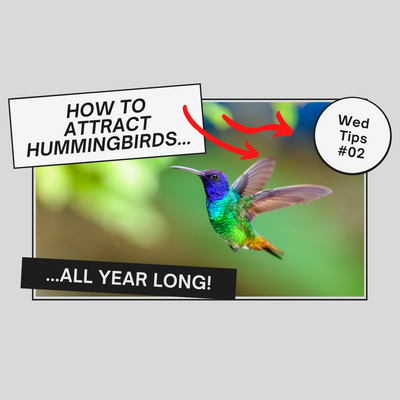
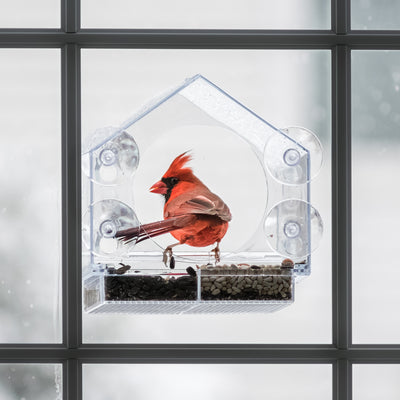
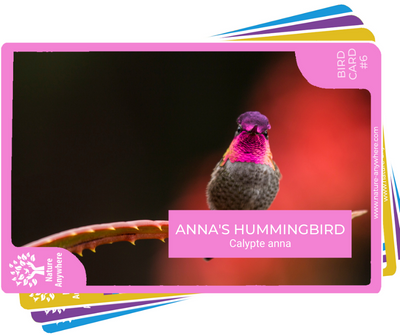

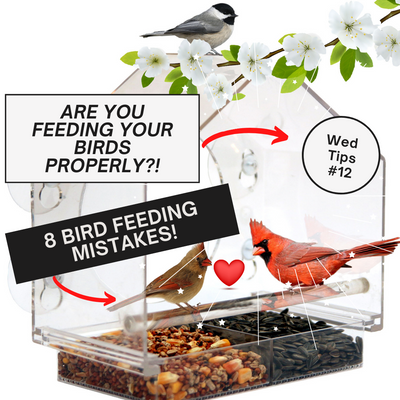
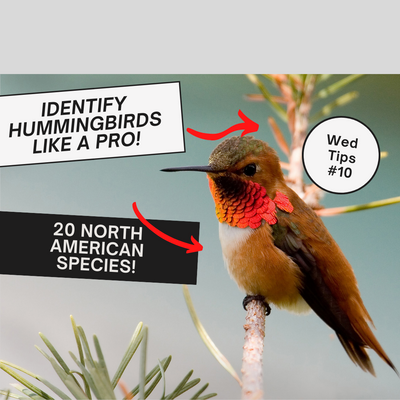

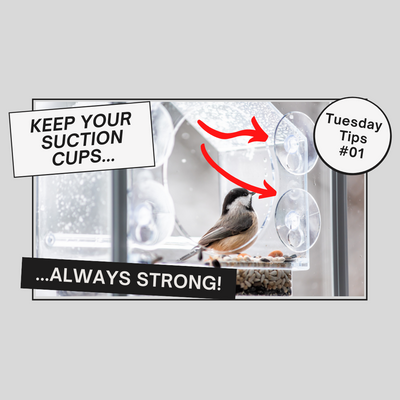
I just love watching these little hummers. I have two that keeps coming to the feeder filled with clear nectar and there’s just such a joy for this old man they come to the feeder probably 100 times a day. They remind me of being in a dogfight like Tom Cruise, and they are fast.❤️💜💙💚
Actually…they do have a sense of smell…a study at UC Riverside shows this…yes they do love red…but they also love purple white orange and pink